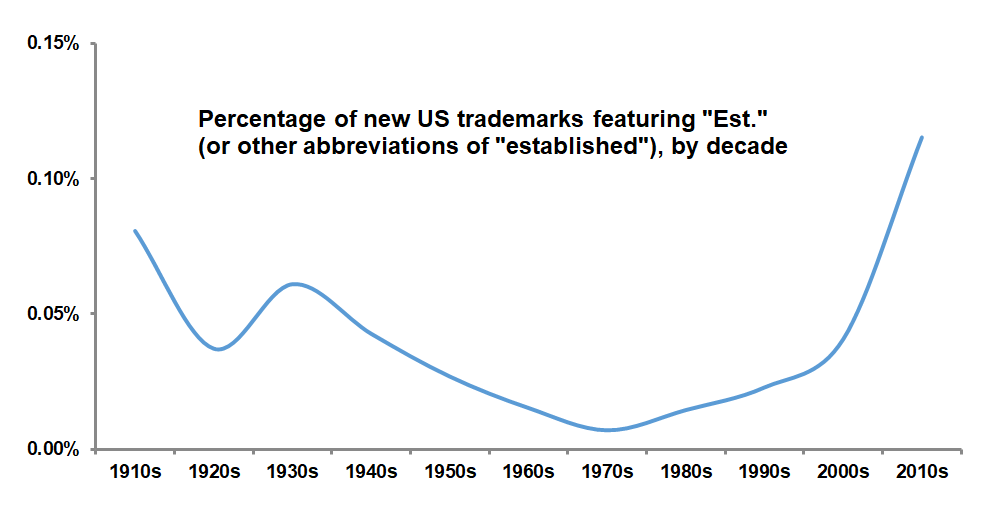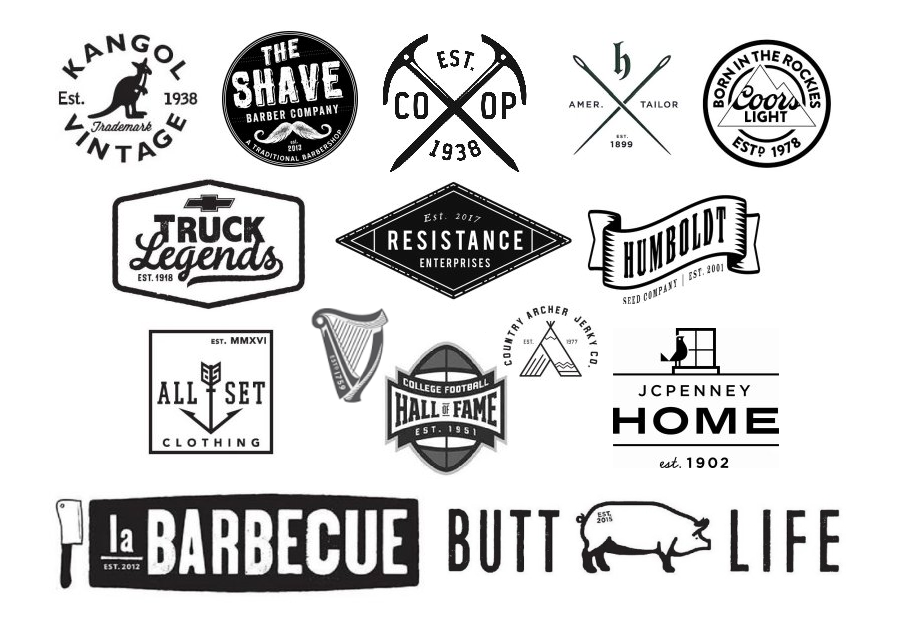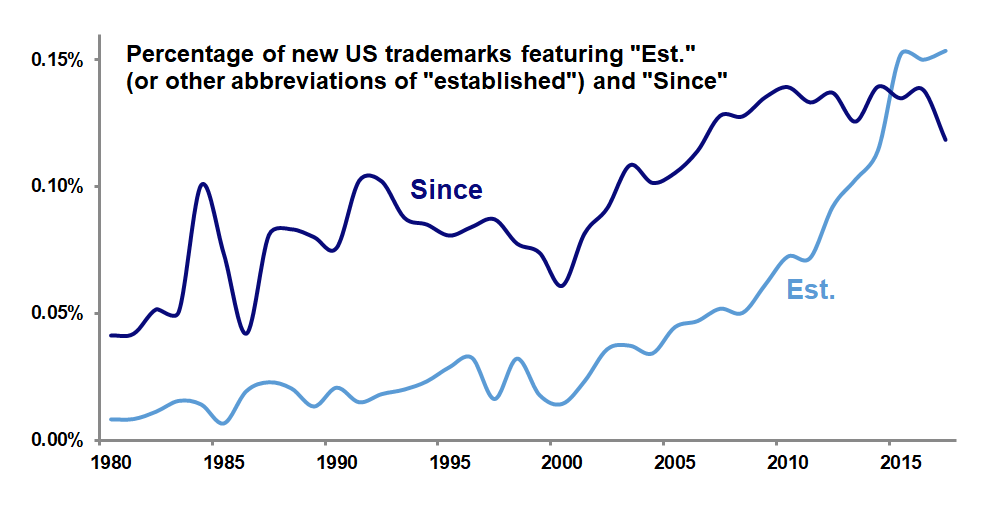Does your local craft brewery’s logo helpfully inform you that the business was “Est. 2016”? Logos declaring the year that a company was established seem to be everywhere recently. In particular, businesses seeking to adopt a hipster aesthetic appear to append an “est.” to their logos just as often as they use crossed objects or mustaches in their marks. What accounts for the prevalence of this visual quirk?
Analysis of United States Patent and Trademark Office data confirms that “est.” and other abbreviations for “established” have been appearing in trademarks much more often in recent years–in fact, in terms of percentages, 19 times more often this year than in 1980. The related term “since” has also enjoyed increased popularity among trademarks, but was no match for “est.,” which surpassed it in use in 2015.
Among these “est.” trademarks filed this decade, the most common abbreviation used is “est.” itself (with or without the period), appearing in 91.7 percent of such marks. Less often used, accounting for 8 percent of these trademarks, is “estd.” and its variant “est’d.,” which, perhaps owing to their rarity, seem to project more gravitas, particularly in the typographic variation in which the “D” is made smaller and placed above the period (see the Guinness and Coors Light logos above). Only 0.3 percent of these marks dare to go with the “estab.” abbreviation.
“Est.” seems to function in trademarks in two ways. First, in a basic sense, it seeks to use the business’s longevity as a proxy for its trustworthiness and reliability. When a logo notes that a restaurant was “est. 2015,” though, this function disappears.
Among trademarks filed in 2017 to date, the average year that follows the “est.” is 1988, just 29 years ago. In comparison, the average year after the “est.” in trademarks filed in 2000 was 1939, or 61 years earlier. Clearly, the longevity-signalling function of “est.” is becoming less important today.
The second way that “est.” works in trademarks is to evoke the logos of the past. There is a sense that “est.” was used a lot in old trademarks; the marks below, all from the first half of the last century, exemplify this usage. Including “est.” in today’s logos is an attempt to imbue them with a vintage feel that often aligns with the aforementioned hipster look.
Digging back further into USPTO records, we can see that “est.” was indeed used much more often in the first half of the twentieth century than in the second half. Interestingly, though, the rate of use of “est.” during this decade has surpassed that of the 1910’s!
 Today’s use of “est.” in trademarks is doubly ironic. Promoting a business as “est. 2017” in 2017 borders on ridiculousness. And using “est.” as a symbol of old-timeyness more often than it was used during those actual old times is nearly as silly. What is not clear, though, is how much of this irony is intentional.
Today’s use of “est.” in trademarks is doubly ironic. Promoting a business as “est. 2017” in 2017 borders on ridiculousness. And using “est.” as a symbol of old-timeyness more often than it was used during those actual old times is nearly as silly. What is not clear, though, is how much of this irony is intentional.



